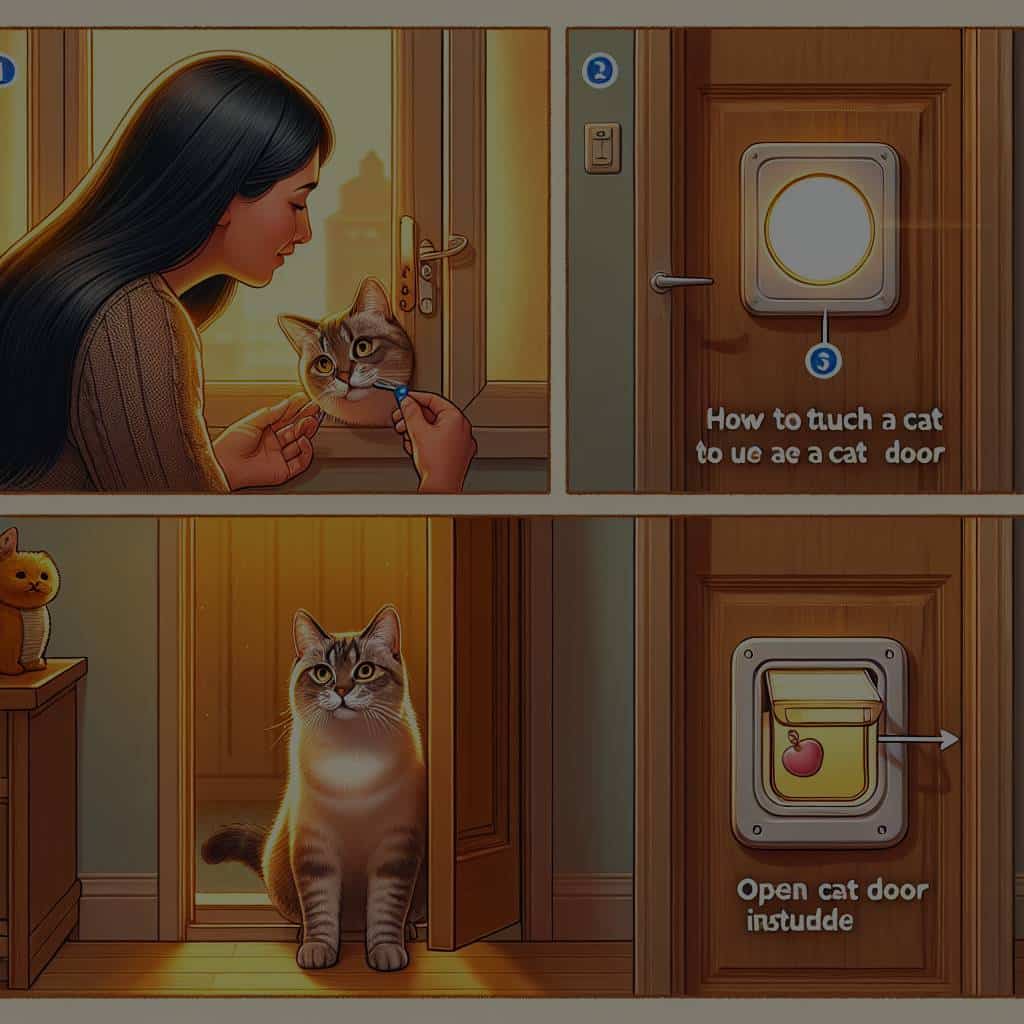Cats are creatures of habit, and teaching them to use a new tool or gadget in their environment such as a cat door, often referred to as a cat flap, can sometimes be a challenge. However, with the right approach, ample patience, and the appropriate training techniques, you can successfully teach your beloved pet to use this handy door.
Understanding the Basics: What is a Cat Door?
Before we dive into the step-by-step process of training your cats to use a cat flap, it’s important to understand what this product is, and why it can be a great addition to your home.
Have you seen this : What Are the Best Strategies to Reduce Dander for Cat Owners with Allergies?
A cat door, also known as a pet door or cat flap, is a small portal in a wall, window, or human door to allow pets to enter and exit a house on their own. Cat doors are often used by homeowners who want to give their pets the freedom to move in and out without requiring human assistance each time.
Although cat doors are primarily used for cats, some small dog breeds also find them convenient. It’s worth noting that cat doors come in different types and sizes, and some even have advanced features like magnetic or microchip locks to prevent other animals from entering your home.
Also to read : What Are the Best Techniques for Training a Dog with Visual Impairments?
Having a cat door can also help you maintain a cleaner home environment. For example, if your cat has access to an outdoor litter area via the cat door, it reduces the mess and odors associated with indoor litter boxes.
Choosing the Right Cat Door
When it comes to selecting the right cat door for your pet, there are several factors to consider. The door’s size, the type of lock it provides, its durability, and ease of installation all play a crucial role.
The size of the door is one of the primary considerations. The door should be large enough for your cat to comfortably pass through but not so large that it allows bigger animals (like dogs or raccoons) to enter your home.
The type of lock is also important. Some cat doors come with a basic flap that can swing both ways, while others come with more advanced locking mechanisms that only allow your pets to enter or leave the house, preventing other animals from getting in.
When it comes to durability, it’s worth investing in a high-quality cat door that can withstand regular use and the elements, especially if it’s going to be installed in an outdoor door or wall.
Finally, consider the ease of installation. Some cat doors can be easily fitted into a regular door, while others might require professional help for installation.
Training Your Cat to Use the Door
Now, let’s get to the main event – training your cat to use the door. This might require some time and patience, but by following these steps, you’ll have your cat confidently using the door in no time.
Step 1: Familiarization
Start by introducing your cat to the door. Some cats might be wary of the new object, so it’s important to let them inspect it at their own pace. You can encourage your cat to approach the door by placing some treats near it.
Step 2: Demonstration
Next, show your cat how the door works. Push the flap open so your cat can see what’s on the other side. If your cat still seems hesitant, you can try going outside and calling them through the door.
Step 3: Encouragement
Use treats and positive reinforcement to encourage your cat to go through the door. You can place treats on the other side of the door to entice your cat to step through. Be sure to give lots of praise and additional treats when your cat successfully uses the door.
Step 4: Practice
Practice makes perfect. Encourage your cat to use the door multiple times a day. Over time, your cat will become more comfortable and confident using the door.
Calling in Professionals
If you’re still having trouble training your cat to use the door, don’t fret. There are professionals like Patrick, a renowned animal behaviorist, who can help you out. Patrick is known for his gentle and effective training methods that can help your cat adapt to using the cat door in no time.
Remember, patience is key when it comes to training your pet. Not all cats will take to the cat door immediately, but with time and consistent training, your cat will soon be using the cat door with confidence and ease.
Using Diverse Training Tools: Toys and Treats
After understanding the basics of cat flaps and selecting the perfect product for your feline friend, it’s time to start the training process. Remember, patience is the key here, as it might take some time for your cat to get comfortable with this new change in their routine. It’s important to make the process enjoyable and low-stress for your cat, and for this, using treats and toys can be of great help.
Toys are a fantastic tool to pique your cat’s curiosity. Cats are naturally playful creatures, and introducing toys near the cat door can inspire them to explore the new object. Toys like small balls or feather wand toys can be placed near the door to attract your cat’s attention. You can even use a laser pointer to guide your cat through the cat flap, turning a training session into a fun playtime.
Treats, on the other hand, are great for positive reinforcement. Every time your cat successfully uses the cat door, reward them with a treat. This will help your pet associate using the cat door with positive experiences, making them more likely to use it independently.
Remember, be sure to use cat-friendly toys and treats. Always check with a vet if you’re unsure about the suitability of a particular product.
Conclusion: Enjoying the Benefits of a Cat Door
With patience and consistent training, teaching your cat to use a cat flap can be a rewarding process. It not only provides your pet with newfound freedom but also offers a number of benefits for you as a pet owner.
A well-trained cat using a cat door can lead to a reduction in indoor messes. Say goodbye to litter tracked all over your floors, or waking up to find a pot plant knocked over. With the ability to access the outdoors whenever they want, your cat can use an outdoor litter area, reducing the need for an indoor litter box.
Additionally, a cat door can also reduce unwanted behavior. Cats often scratch at doors or meow excessively when they want to go outside. By providing them with a door they can access anytime, you can eliminate these behaviors.
Finally, a cat door provides a great product for enhancing your cat’s mental and physical stimulation. The freedom to roam outside at will can help keep your cat physically fit and mentally stimulated, contributing to their overall health and happiness.
As a reminder, when choosing a cat door, consider the size, the lock type, its durability, and ease of installation. And in training your cat, use a variety of tools such as treats and toys for positive reinforcement and to make the process enjoyable for your cat.
Don’t be disheartened if you face some challenges along the way. Remember, every cat is different, and what works for one might not work for another. Stay patient, remain consistent, and don’t hesitate to seek professional help if needed. Before you know it, your cat will be confidently strutting through their very own door, ready to explore the world on their terms.






